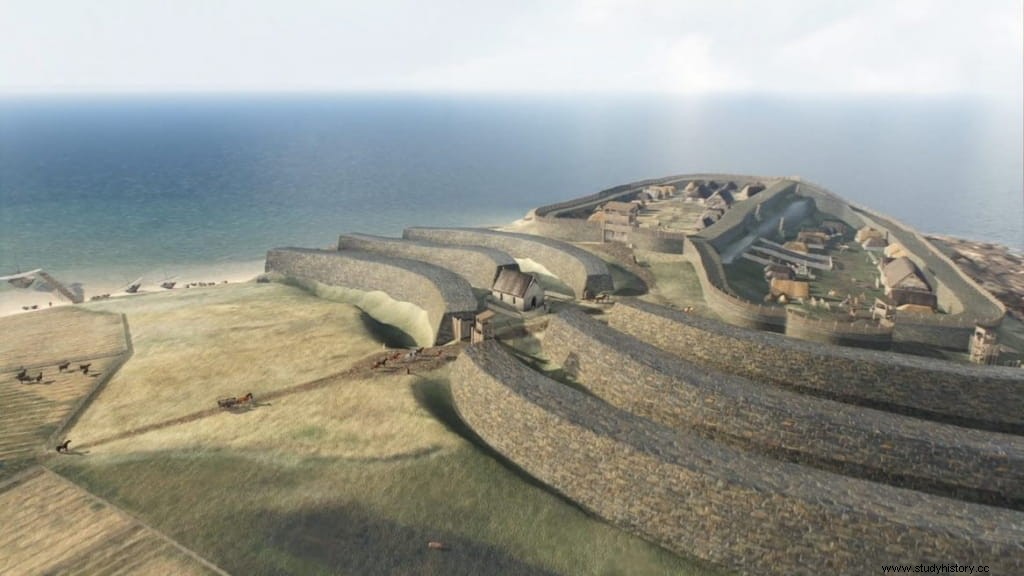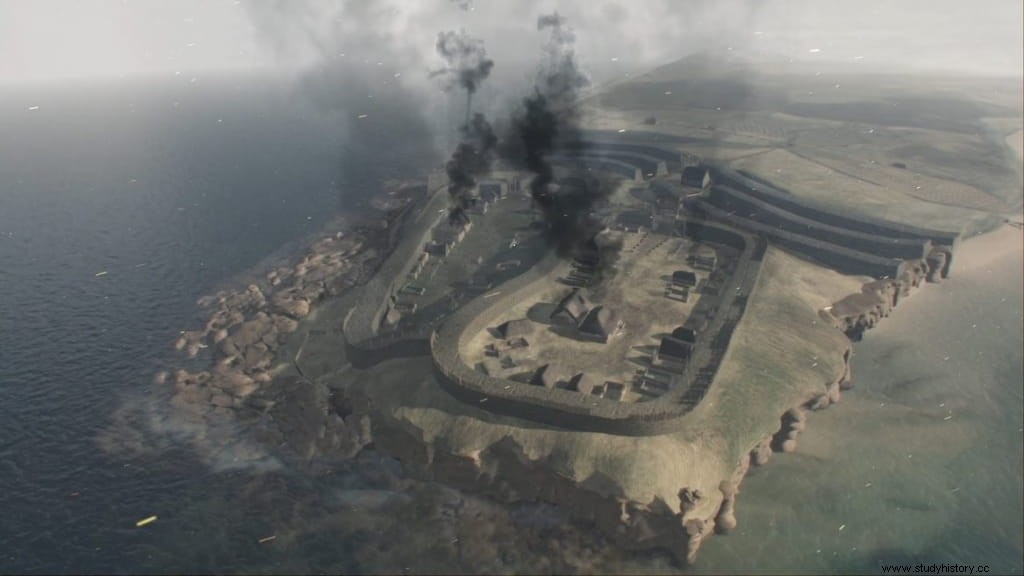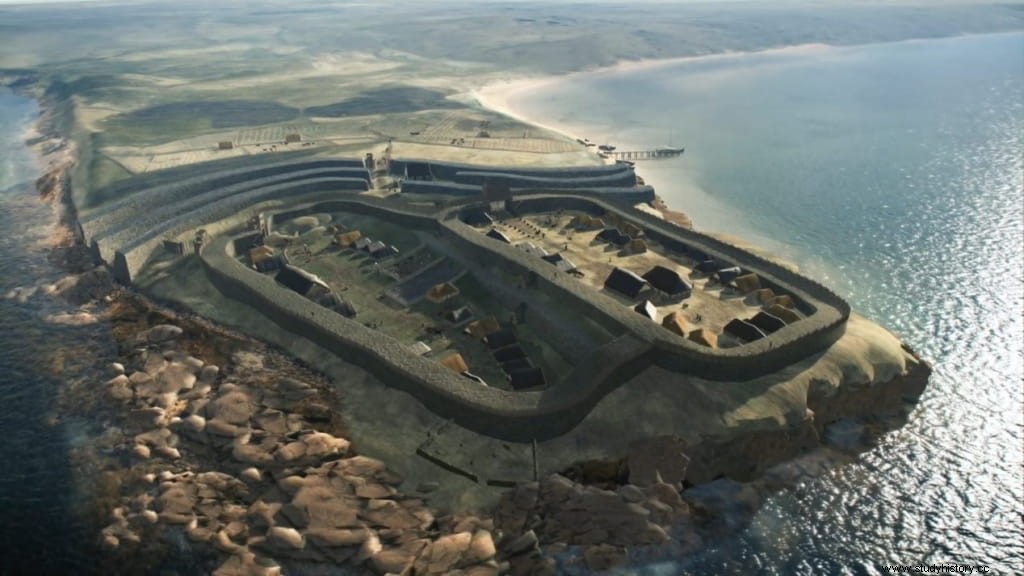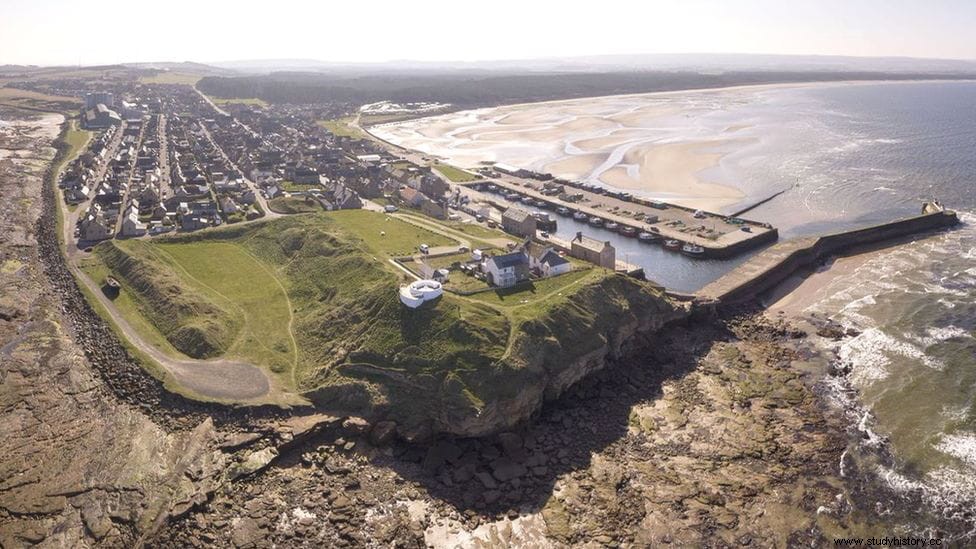An impressive new reconstruction has revealed what Burghead might have looked like in Moray Council, Scotland's largest Pictish fortress, as it might have looked more than a thousand years ago. Three-dimensional images of the fortress on the northeast coast of Scotland have been created, based on archaeological excavations carried out by the University of Aberdeen.
The images, financed by Historic Environment Scotland As part of a larger video project to increase the public's understanding of Scotland's Pictish past, they show the massive defensive walls, believed to have been eight meters thick and six meters high, as well as the dwellings of the fort.

It has long been known that Burghead was home to a Pictish settlement, but the development of the modern city in the 19th century was thought to have eroded away most traces of this important period in its history. The earth walls were leveled and part of the sea defenses were destroyed to build the modern port.
During the destruction of the fort, more than 30 stones carved by the Picts were discovered, but only six carved bulls and several fragments of early Christian sculpture have survived. When archaeologists from the University of Aberdeen began excavating there in 2015, they expected that little would have survived such extensive and nearby construction sites.

But in the last five years a very different picture has emerged and the excavations, led by the University's Professor Gordon Noble, and funded by Historic Environment Scotland and the Leverhulme Trust , have produced some of the most important Pictish artifacts and building remains ever discovered. This work has allowed us to reconstruct in great detail what the place might have looked like.
According to Professor Noble The scale of the houses and buildings we have discovered shows that this was a densely populated and important Pictish site . We have found many objects that have helped us to better understand the daily life of the inhabitants of Burghead between the 6th and 10th centuries AD. From metallurgy to weaponry and even barrettes for hair and dress, with each new excavation we are discovering more about our ancestors who lived here .

The foundations of the massive walls have survived much better than anyone expected, despite their willful destruction over the centuries, and the rubbish layers, which is indeed where the Picts dumped their rubbish, have provided archaeologists an amazing insight into his life. It is wonderful to see the work of our excavations, spanning over five years, brought together in these impressive reconstructions that offer a startling glimpse of what Burghead may have looked like.
The reconstructions have been coordinated by Dr Alice Watterson, University of Dundee, with additional filming and editing work by Kieran Duncan and drone filming by Dr Kieran Baxter, members of the 3DVisLab research group in Dundee. They also include a spectacular well wrapped in the walls. Elements of this well can still be seen, and archaeologists have pieced together how it fit in with homes and other buildings on the site.

Previous excavations have also uncovered evidence of early Christian occupation, supporting the theory that there was a chapel at the entrance to the site, and this has resulted in the three-dimensional design.
Burghead Fortress was destroyed by fire in the 10th century, a time when Vikings are known to have raided the Moray coast, quickly ending a way of life that had endured for centuries. The fort remained unoccupied until around the 12th century.
Dr. Kevin Grant, Director of Archeology at Historic Environment Scotland , he said:Burghead Fortress was one of the most important sites in early medieval Scotland, and it was built to be dramatic and imposing . These reconstructions help us imagine the experience of this spectacular place in its heyday. We are also delighted to support these excavations, which are transforming our understanding of Pictish Scotland and saving important archaeological remains from being lost to the waves .
Dr. Watterson added:Burghead has certainly been one of our most difficult projects to date. Not only was it one of the largest sites I've ever rebuilt, but to model its full extent we had to completely reshape the landscape to remove the modern city and rebuild the eroded cliffs. Working on visualization and outreach involves combining interpretation and research with compelling visual storytelling. It was especially important for our team to capture Burghead's sense of place. Its dramatic location on the Moray Coast is key not only to its archaeological interpretation, but also what makes it such a special place to visit today.
Additional funding from Historic Environment Scotland is supporting further excavations at the site, which it hopes will lead to a better understanding of how those who lived there related to the rest of the world.
